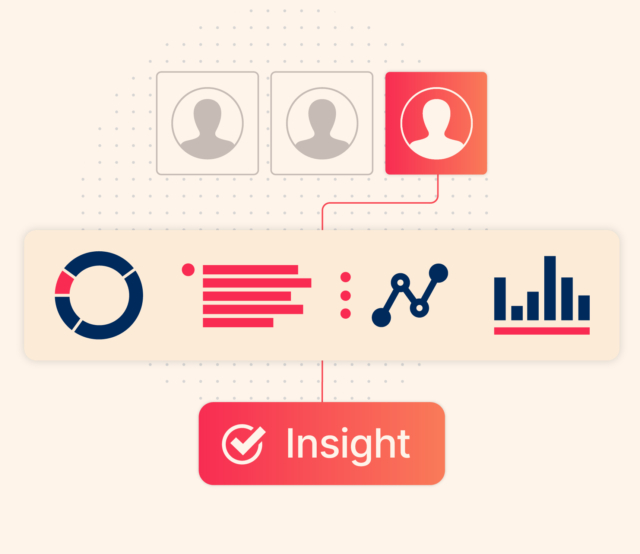7 Recruitment Trends You Shouldn’t Ignore in 2025

The war for talent is raging. To win, you need more than a basic understanding of recruitment trends.
Ready to snag the best talent in 2025? It’s a competitive world out there, and keeping up with the latest recruitment trends is key. Think of this as your cheat sheet to staying ahead of the game! We’ll dive into 7 key trends, sprinkle in some real-world examples, and give you actionable tips you can actually use in 2025!
1. The Rise And Rise (And Reign) Of AI-Powered Recruitment – Don’t Just Use AI, Integrate It:
A 2024 study by the Society for Human Resource Management (SHRM) found that AI-powered recruitment systems can reduce time-to-hire by an average of 40%. This is a significant increase from the 30% reported in the previous year’s IBM study, indicating the rapid advancement and adoption of AI in the HR field.
By now we all know AI can analyse thousands of CVs and data to pinpoint those candidates who truly match what you’re looking for – even if their experience isn’t presented in the usual way. However, you might not know that it can even learn from past hires to predict who’s likely to thrive in your company culture and contribute to your team’s success. This is just one of many AI Use Cases in Recruitment that help organizations make data-driven hiring decisions while improving efficiency.
Here’s another big one – AI can help you avoid those unconscious biases that sometimes creep into hiring decisions. By flagging potential red flags in your process, it helps you build a more diverse and inclusive team, which I think we can all agree is a huge win for 2025.
Actionable Tip: Don’t just adopt AI – integrate it strategically. Use AI-powered tools to analyse your existing recruitment data and identify areas for improvement. For example, if your data shows a high drop-off rate at a specific stage, AI can help pinpoint the cause and suggest solutions. Unilever uses AI to analyse video interviews, assessing candidates’ body language, tone of voice, and word choice to predict job performance.
2. Zero In On Employee Value Proposition (EVP) – It’s Not Just About The Free Snacks:
Research by Gartner shows that organisations with a clearly defined EVP can decrease annual employee turnover by just under 70%.
A strong EVP isn’t just about the cool perks; it’s about creating a workplace where people truly feel valued and supported. It starts with being open about what your company believes in and actually living those values every day. It means offering benefits and ways of working that suit each person’s needs and help them find a good balance between their work and personal life. Think things like flexible hours, help with well-being, and time to recharge. And most importantly, it’s about making sure everyone feels like they’re part of something meaningful, with chances to learn, grow, and build a career they love.
Actionable Tip: Go beyond generic statements. Showcase your EVP through employee testimonials, videos highlighting your company culture, and personalised career pages that resonate with different candidate personas. Salesforce offers a comprehensive EVP that includes generous parental leave, wellness programs, and opportunities for volunteering and social impact.
3. Skills-Based Hiring Will Take Centre Stage Which Means Fancy Degrees Might Not Be Impressive In 2025
LinkedIn’s 2023 Global Talent Trends report found that 83% of companies are now prioritising skills over traditional qualifications.
Focusing on skills opens up a world of possibilities for companies seeking top talent. By prioritising what candidates can do over traditional markers like degrees or career paths, organisations can tap into a much wider and more diverse talent pool. This means considering individuals with valuable experience gained through non-traditional routes, such as online courses, bootcamps, or even self-directed learning. It also means recognising the potential of those who may have taken career breaks or followed unconventional paths. This skills-based approach not only expands the pool of potential candidates, but also brings in fresh perspectives and diverse experiences, ultimately leading to a more innovative and dynamic workforce.
Actionable Tip: Develop clear competency frameworks for each role, outlining the essential skills and how they will be assessed. Use a variety of assessment methods, such as simulations, coding challenges, or portfolio reviews, to evaluate candidates’ skills objectively. Google uses skills-based assessments to identify candidates with the right technical skills, regardless of their degree or prior work experience.
4. Internal Mobility Will Be The “Hire” Power Move In 2025
A 2023 Deloitte study found that companies with strong internal mobility programs have 30% higher employee engagement and retention rates.
Want to create a workplace where people are genuinely excited to come to work every day? Internal mobility is a fantastic way to do just that! By giving your employees opportunities to grow, learn new skills, and take on fresh challenges, you’ll build a vibrant and engaging environment where everyone feels valued and motivated. This not only means you get to keep your awesome people around longer, but it also creates a culture where everyone’s learning and growing together. When people know they have a clear path to move up and try different things without having to leave the company, they’re more likely to stay engaged, become even better at what they do, and contribute amazing work. Plus, internal mobility lets you make the most of the talent you already have, fill those tricky skill gaps quickly, and boost morale all around. It’s a win-win for everyone!
Actionable Tip: Implement a robust internal talent marketplace that allows employees to explore open roles, showcase their skills, and connect with mentors. Offer personalised career development plans and training programs to support their growth. IBM has a successful internal mobility program that allows employees to move between roles and departments, gaining new skills and experiences.
5. The Metaverse Enters the Recruitment Scene, It’s Not Just A Game Changer, It’s A Reality Changer:
PwC’s 2023 Metaverse Survey predicts that the metaverse will contribute $1.5 trillion to the global economy by 2030.
The metaverse is like stepping into a whole new world – and it’s about to shake up how we hire! Forget boring video calls, we’re talking about interviews in a virtual office where candidates can actually meet their future teammates, check out their potential workspace, and even try out work tasks. It’s way more fun and engaging than a regular interview, giving candidates a real taste of what it’s like to be part of the team. And for recruiters, it’s like getting a superpower! You can see how candidates handle different situations and get to know them better. Plus, it means you can connect with talented people from all over the world in a way that feels like you’re right there with them. Pretty cool, right?
Actionable Tip: Start experimenting with metaverse platforms to host virtual events, conduct onboarding sessions, or create interactive training programs. Accenture has created a virtual campus in the metaverse called the “Nth floor,” where employees can connect, collaborate, and learn.
6. Data-Driven Recruitment – Let The Numbers Do the Talking (And The Hiring):
According to a 2023 report by Aptitude Research, companies that use data to drive their recruitment decisions are 2x more likely to improve their quality of hire.
Data analytics isn’t just a cool trend anymore, it’s the secret sauce for finding and keeping amazing people! Think of it like your recruitment superpower – by tracking those important hiring numbers and looking closely at the data, you can spot where things might be getting stuck, make your hiring process super smooth, and make decisions based on facts, not just guesswork.
Actionable Tip: Invest in a robust Applicant Tracking System (ATS) with built-in analytics capabilities. Use data to understand which sourcing channels are most effective, which interview questions are most predictive of success, and how to reduce bias in your hiring process. Amazon uses data to track the effectiveness of its recruitment campaigns, identify top-performing recruiters, and optimise its candidate experience.
7. Prioritising Diversity, Equity, And Inclusion (DE&I), It’s Not Just The Right Thing To Do, It’s The Smart Thing To Do:
A 2024 McKinsey study found that companies in the top quartile for ethnic and cultural diversity on their executive teams were 36% more likely to have above-average profitability than companies in the 1 fourth quartile.
DE&I isn’t just about making sure your workforce looks diverse – it’s about building a workplace where everyone truly feels like they belong. It’s about creating a space where everyone feels valued, respected, and supported, no matter their background, identity, or experiences. This means making sure everyone has equal opportunities to grow, learn, and advance in their careers. It’s about fostering a culture of understanding and empathy, where different perspectives are not just welcomed, but celebrated. When people feel safe and empowered to bring their whole selves to work, that’s when the real magic happens. You get a more creative, innovative, and engaged team, and everyone wins!
Actionable Tip: Go beyond diversity targets. Implement inclusive hiring practices, provide unconscious bias training, and foster a culture of belonging where all employees feel comfortable bringing their whole selves to work. Microsoft has a comprehensive DE&I strategy that includes initiatives to increase representation of women and underrepresented minorities in leadership positions, create inclusive employee resource groups, and promote accessibility for all.
By embracing these trends and implementing the actionable tips, you can transform your recruitment process and attract the best talent in 2025. Remember, the future of recruitment is about more than just filling roles – it’s about building a diverse, engaged, and high-performing workforce.



